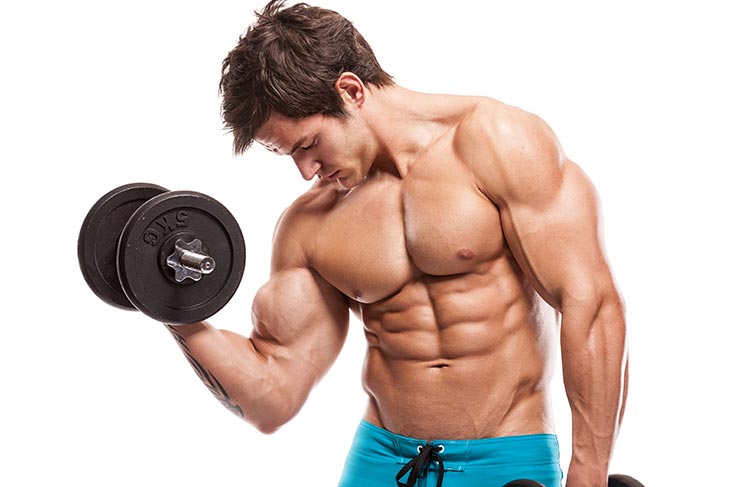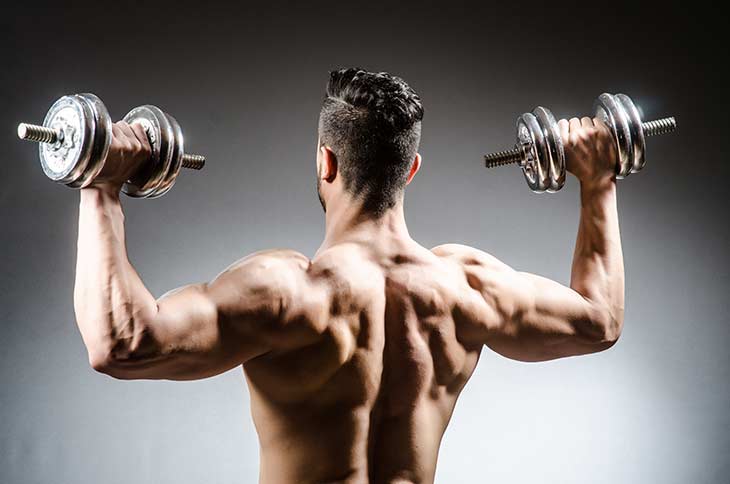WHAT MUSCLE GROUPS TO WORKOUT TOGETHER?
Bodybuilding workouts include cardio and resistance training; they aid in reducing body fat and increasing muscle mass for improved health and more muscular appearance. Strength training using weights or equipment like a Max Climber improves the muscle fiber by exerting pressure on certain muscle groups. When used along with cardio exercise, it enhances muscular definition. Bodybuilding exercises are classified according to the targeted muscle groups. There is also a great deal of literature that states how HGH is critical when it comes to bodybuilding and gaining muscle.
Most fitness trainers, however, focus on particular bodybuilding exercises thus training two or more major muscle groups in the same workout; a trend that drains the trainer’s energy and overloads the nervous system. Muscle groups don’t function individually; smaller muscles support large muscles and all have a foundation in developing a strong core. Thus, a chest press works the shoulders, triceps, and the pectorals at the same time. As such, trainers should split their workout sessions to work both small and large muscles so as to stimulate growth in all muscle groups. A chest and shoulder press using dumbbells for example, helps exercise the chest, shoulders (large muscles) and the triceps (small muscles). In our discussion, we will look at what muscle groups to work together using a 3-day split schedule.
The chest, shoulders, and triceps
Also referred to as the push muscles they collaborate to push resistance away from the body. The chest, shoulders, and pectorals represent the larger muscles while the triceps (located at the back of the arm) represent the smaller muscles. Apart from shoulder and chest press exercises, trainers may use using dips (for the chest), the overhead press (works the front, side and rear deltoids that make up the shoulder muscles) as well as the reverse and close grip bench press (trains the triceps) or cable crossovers.
The back and the biceps
Also referred to as the pull muscles, they work to pull resistance towards the body. The back (large muscle) comprises rhomboid and latissimus muscles which are supported by the biceps (small muscle) located on the front side of the upper arm. Pull down exercises performed using barbells and cable pulleys are ideal for this muscle group; the back works to move the shoulders while the biceps contract to aid in the movement of the elbow. Weight training exercises like deadlifts are also ideal for the back and biceps muscle group as they assist in the development of a stronger back.
Hamstrings (biceps), calves and the glutes
They are located at the back of the leg and aid in hip and knee movements. The hamstrings help in flexing the knee joint using three other muscles (semimembranosus, semitendinosus, and the femoris) thus used during squats. Fitness experts advise trainers to focus on stiff legged and Romanian deadlifts to prevent injury when performing squats. Hamstrings extend to the hip to support an upright posture while the calves function alone by pointing the toe and lifting the heels up. The secret to building healthy calves for this set of muscle group is to work each muscle in the calf area; the gastrocs, the anterior, and the tibialis. Gluteal muscles support the hamstrings and biceps muscles. If foot pain is an issue, check out these shoes for high arches.
Now that we know what muscle groups to work together, we will look at a three-day workout split example to help trainers start off a successful regimen at their local gym.
Day 1: training the chest, shoulders, and triceps muscles
Chest exercises involve shoulder and triceps muscles. However, after using the muscle group trainers can rest for a week before training them again. Trainers may perform exercises like barbell bench presses and cable flys (for the chest), dumbbell shoulder presses and lateral raise (for the shoulders) and French presses (for the triceps).
Day 2: back and biceps exercises
Trainers may perform exercises like the reverse grip and upright rowing (for the back) and overhead bicep curls to train the biceps. This can also be done using exercise bands in a small space.
Day 3: Leg exercises
They include leg presses (legs), calf extension (calves) and leg curls (for the hamstrings).
The example shows a three-day workout split where trainers choose any three days of the week to exercise; Monday-Wednesday or Wednesday-Friday but there are different kinds of workout splits; six-day, two-day or four-day routines. The number of exercises a trainer performs depends on the body part the trainer is working on. Trainers using a two-day split to work the shoulders and the chest, for example, have to exercise for four days to train the body parts twice while those training on a three-day split can hit all the muscles twice within six days.








